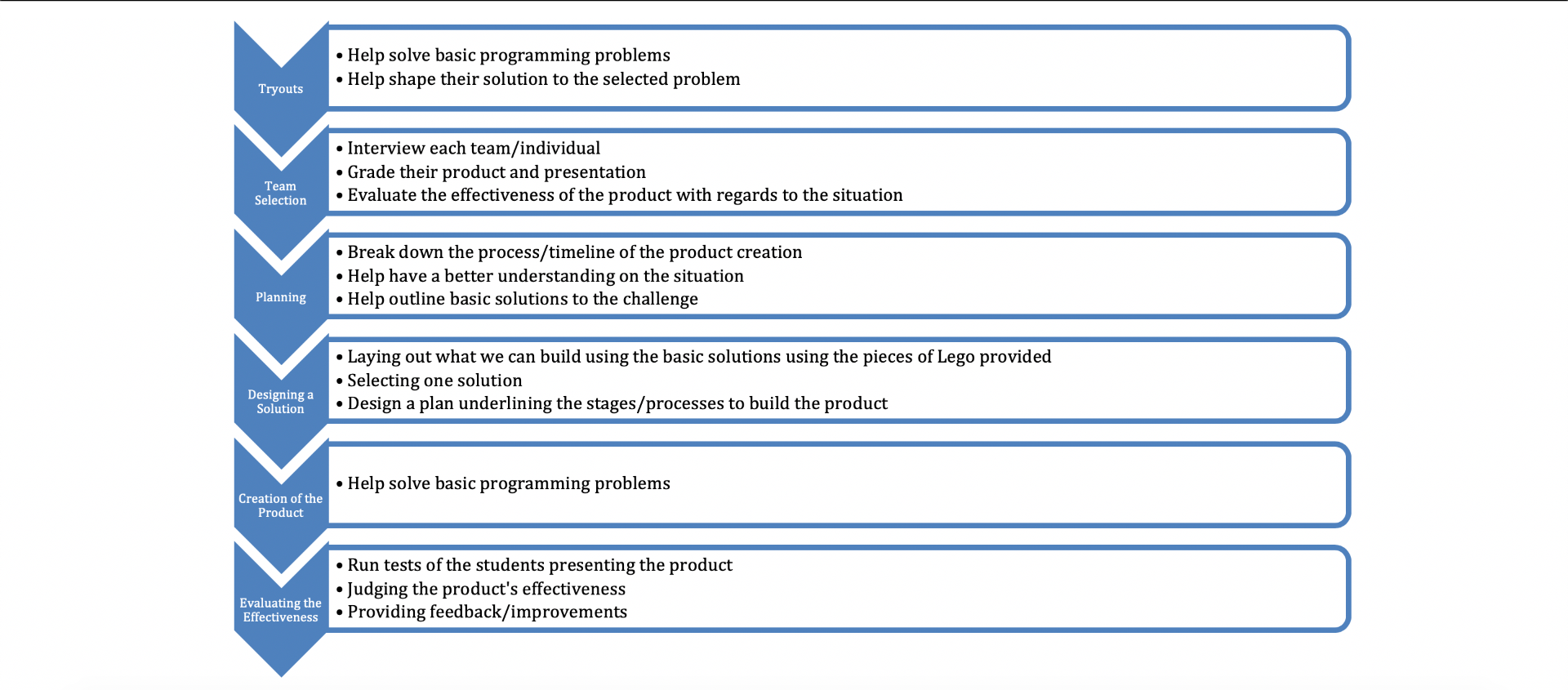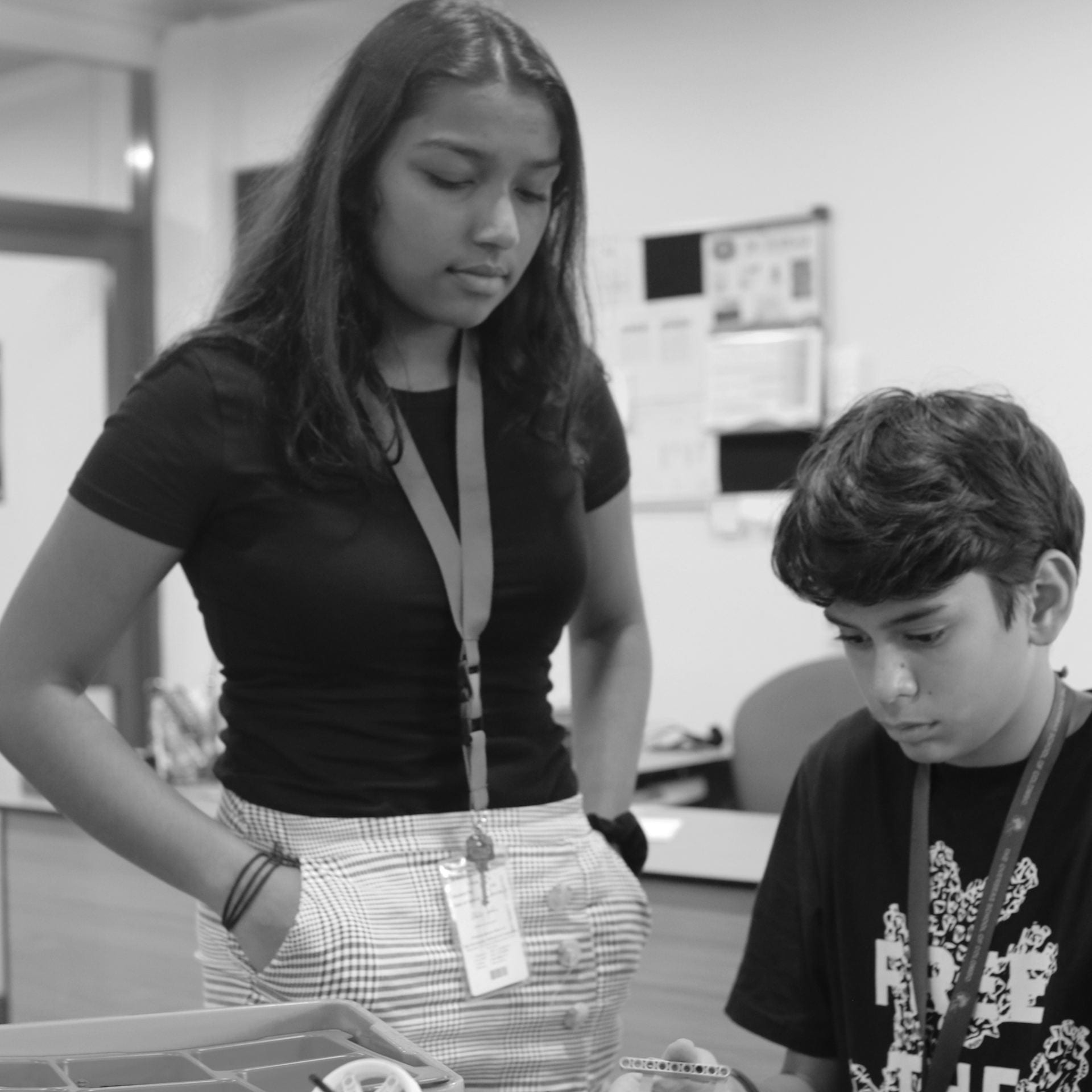Like I said, I returned to DP2 in search of something different, prepared for change, and excited for growth. This year I am a student-mentor for the OSC Robotics Teams. Since last year, the Overseas School of Colombo has been participating in an annual international robotics competition called “First Lego League”. FLL is for middle school students and focuses on building critical thinking skills for the competitors, as each year, FLL introduces a scientific and real-world challenge for teams to focus and research on. The students must then design and program LEGO Mindstorms robots to solve and work out solutions to the various problems they are given. Finally, the students must meet for an international tournament to compete, share their knowledge, compare ideas, and display their robots.
I have worked with Lego Mindstorms twice in my time at OSC: once, in grade 7 and again in grade 9. Both times, they were for my design class where we either had to solve a challenge or problem given to us by our instructor. I really enjoyed my time building and programming the Mindstorms and thought it was a very useful experience. Not only did I learn robotics, but I also learnt how they can be used to solve real-world problems we might face. This encouraged me to pursue my passion for robotics by joining the OSC Robotics club, as a student mentor. In previous years, although I did want to join the Robotics club, due to other commitments (such as Colombo Model United Nations Executive Committee), I was unable to participate as a student mentor. And, unfortunately, when OSC started participating in the FLL competition, I was already over the age limit to join as a member of the team. But I am grateful that Ms. Kuruppu (the team supervisor) gave me the opportunity to still participate as the student mentor of the team.
The team tryouts were between August and October, where all the members of the activity would fight for a place in the team by constructing a situation of their own and finding a solution to it using robotics. The criteria for the products they produce will be the same as the one used in the competition. The team selection will happen towards the end of October, where members will present their products and it’s effectiveness when solving the problem. It is important that the product is focused and main purpose is to solve the problem selected, as the team’s success will be judged on the extent to which the prescribed situation is solved in the competition.
At the moment, I am the first and only student mentor of the OSC Robotics club. Between August and March, my role for the team will change as I am only allowed to support them to a limited extent. The flowchart below outlines the basic jobs my position as student mentor is expected to do:

- Initially, there is not much I can do since the tryouts stage is purely based on each individual’s creative and critical thinking skills. Their ability to build a solution to the selected situation using robotics and program its functionality is their ticket to being a part of the team. I don’t believe that it would be fair of me to interfere by providing any student with an advantage to the others in this stage, besides simple or basic issues they face when programming.
- I will be one of the interviewers during the team selection process, where each member trying out for the team will have to present his product to us. Here is where I will be expected to grade the student’s projects using the FLL criteria and evaluate the effectiveness of their product. After all the products are presented, Ms. Kuruppu will make a decision on which students are on the team.
- After selecting the team, we will present the Challenge Box to them. Here is where my support for the team peaks, as I am allowed to help them understand the situation clearly and plan out how they are going to spend their time creating the solution.
- Now that the team has the Challenge Box, they also know what Lego Mindstorm pieces they have and can use to build a solution. Using the basic solutions, we drew from the planning stage, we can identify the advantages and disadvantages of each product using the given pieces. Once we weigh out the points, we can select one solution as our final product.
- For the creation of the product, there is not much I can do. For one, it would be unfair of me to support the team as more of a member than a mentor. Secondly, I believe that this competition is meant to test the team’s ability to solve issues they face throughout the process and it would be wrong of me to help them more than I am allowed to. Hence, the most I can do during this stage is to help them solve the basic programming issues they would face with the software.
- Finally, with the first draft of the product, I will help the students run trials to test the effectiveness of their product and evaluate its functionality. I can provide feedback and simple improvements the team can consider before submitting their final product.
In addition to all this, I will also be designing the team t-shirt and helping them present and publish their work to the rest of the school community.
Now, of course, I have set some goals for myself throughout this entire journey and they are:
- Undertake the challenge of working collaboratively with middle schoolers and guiding them through this experience.
- Planning and making a timeline for the creation process of the final product.
- Develop new skills in robotics and programming, as this experience is just as enriching for me as it is for the team.
- Encourage more female students to participate in the activity (since there are no girls in the team and I am the only female student a part of the activity)
On a closing note, I am so excited to be a part of this team as a student mentor and cannot wait to find out how this year goes with the OSC Robotics Team.
